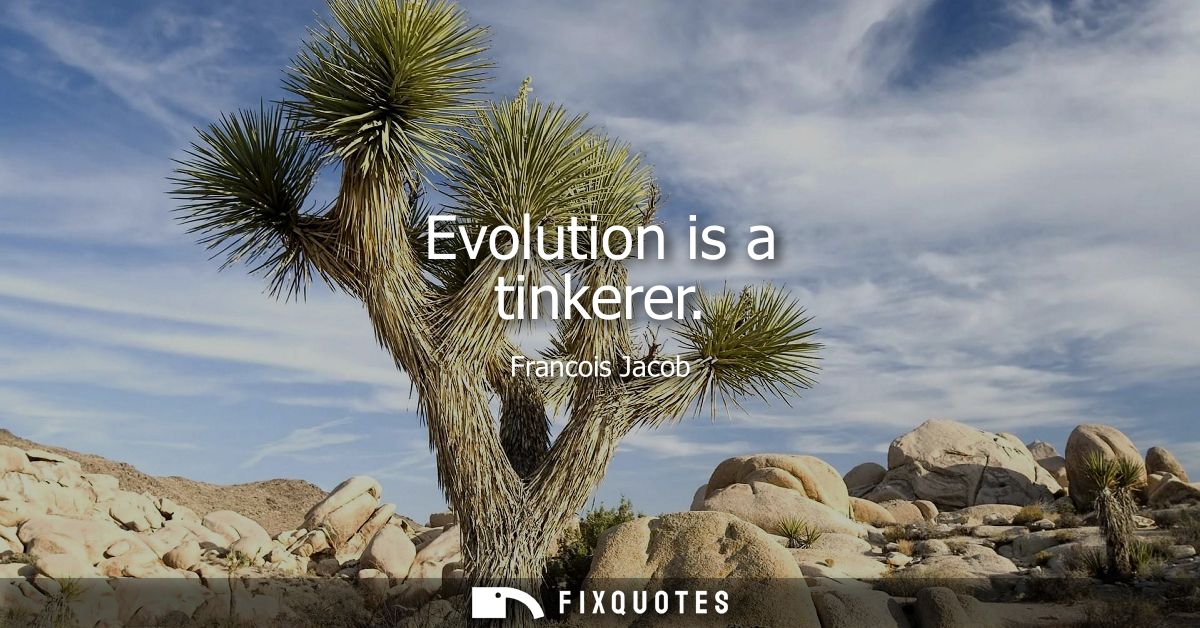"Evolution is a tinkerer"
About this Quote
Evolution, described as a tinkerer, suggests a process marked by improvisation, adaptation, and gradual change rather than grand design or meticulous planning. It paints a picture of nature as an experimenter, utilizing available resources, combining and repurposing old forms to generate new ones. Like a tinkerer rummaging through a box of spare parts, evolution reshapes inherited structures with limited means, working with what is at hand rather than inventing entirely novel features from scratch.
This perspective stands in contrast to the image of an engineer, who would approach problems with a clear blueprint and create tailored solutions for every challenge. Instead, evolution must rely on modification, small incremental steps, and the reshuffling or co-opting of existing traits. An illustrative example is the mammalian middle ear, which evolved from jaw bones of reptilian ancestors, or the crude but effective transformation of fish fins into tetrapod limbs. These structures bear the marks of their past functions, evidencing a lineage of adjustments rather than optimization for their present purpose.
Tinkering in evolution also leads to the diversity and variability observed in living organisms. Since solutions emerge through a process of trial, error, and fortunate accident, nature is replete with features that work "well enough", not perfectly. Vestigial organs, redundant genetic code, and seemingly suboptimal anatomical arrangements make sense in this context, as they reflect the cumulative, historically contingent process that shapes each lineage.
Moreover, the tinkerer metaphor emphasizes the deeply opportunistic and resourceful character of evolution. Adaptations arise as environmental pressures shift, and organisms inventively repurpose available genetic and anatomical components. As a result, evolutionary change is neither linear nor predictable, but characterized by makeshift fixes that respond to local needs.
Viewing evolution in this way brings an appreciation for its creativity and resilience, while also acknowledging its limits. Through a never-ending process of tinkering, life explores possibilities, sometimes stumbling on remarkable innovations by reimagining what already exists.
About the Author

